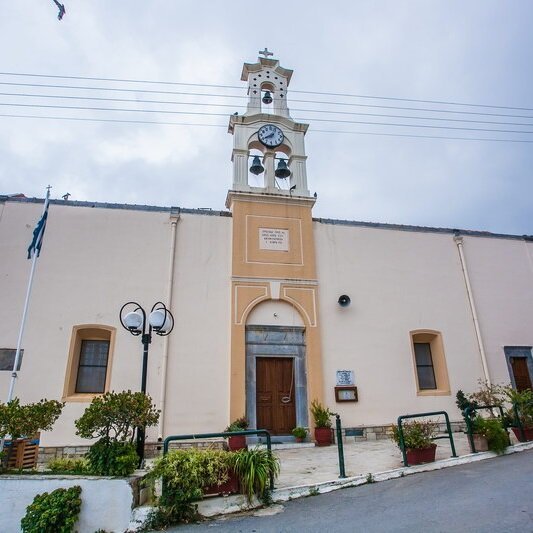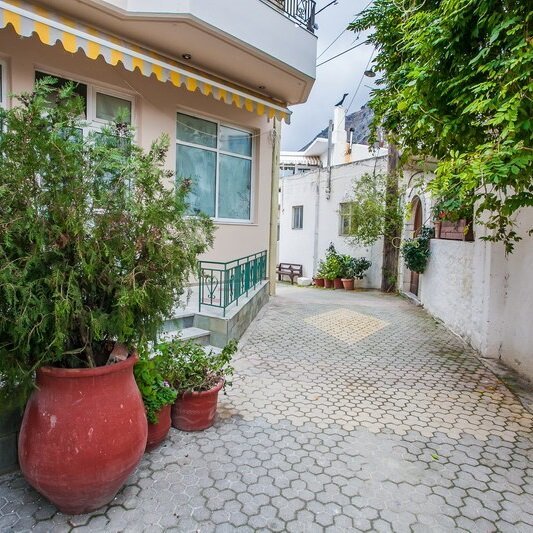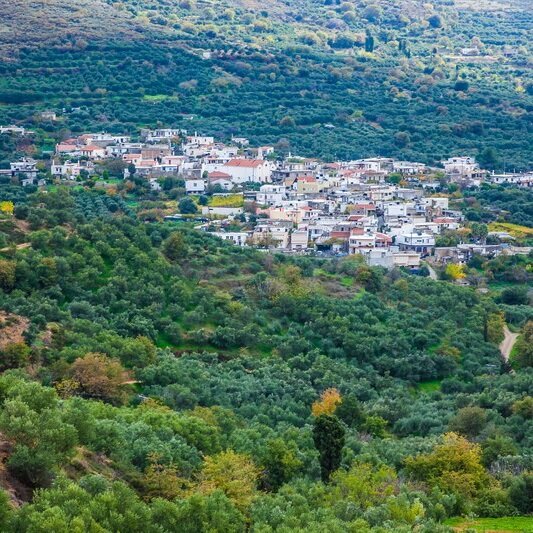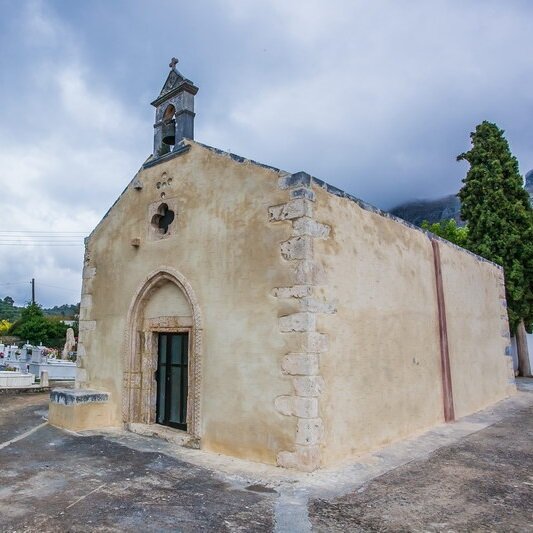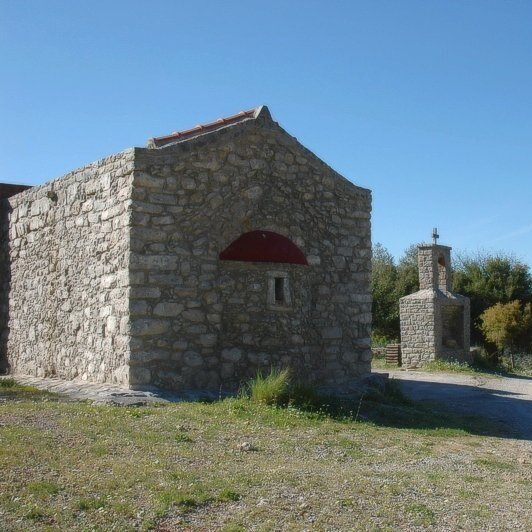Kastamonitsa Village
Kastamonitsa is 6 km away from Kasteli, has 356 inhabitants and lies at 520 m above sea level, in the foothills of the Afendi mountain (1578 m), with the Dikti mountain in the background. The village is the starting point for this short E4 route, that ends at Kato Metochi.
The village is not mentioned in the Venetian registers of the 16th and 17th centuries, nor in the Turkish census of 1671. It is possible that the name is related to that of Kastamoni in Asia Minor: refugees, driven out of their land by the Turks, may well have come and settled here, giving their new home the same name as their old one.
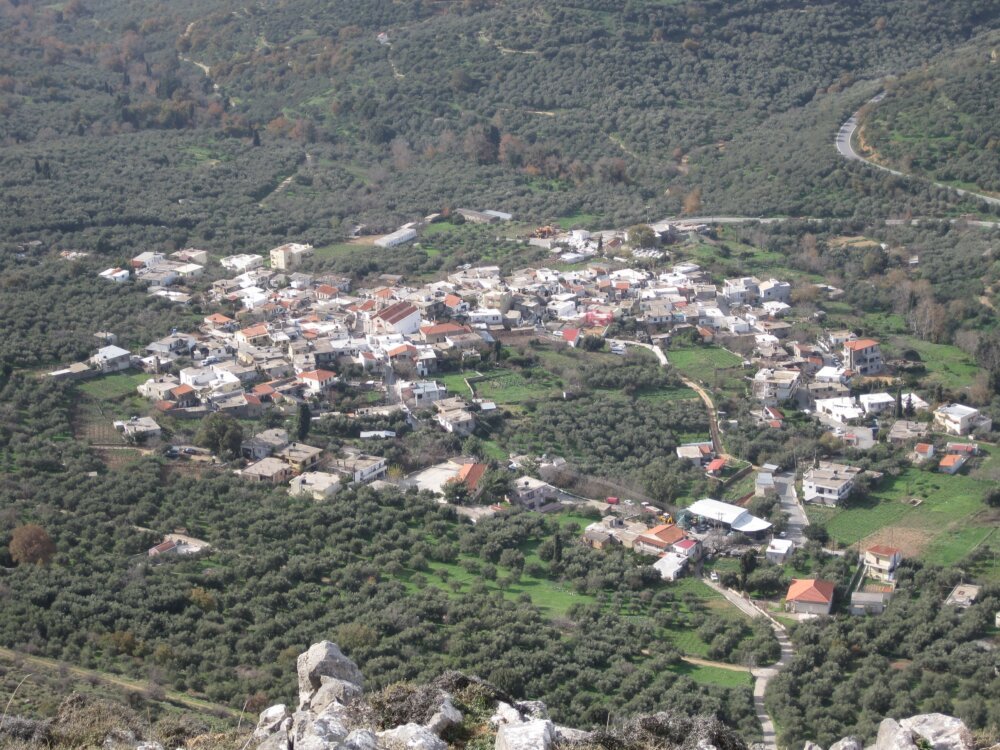
Churches
The church of the Panagia (Virgin Mary) in Kastamonitsa is located inside the cemetery of the village and is dedicated to the Assumption of the Virgin (feast 15 August). The folklorist Georgios Stamatakis considers that it was probably a Catholic monastery, since it is not recorded in any census of temples during the Venetian Era (the monasteries were not listed). It has exterior decorative boards (colored round pots called pinakia) and an elaborate bell tower, while we see several architectural parts from the ancient city Lyttos.
The interior of the temple bears frescoes in poor condition dating back from the 14th century and a wood-carved iconostasis from the mid-19th century by the Makrakis brothers from Mesa Lasithi. The 14th-century frescoes were struck for better adhesion to the plaster, thus destroyed.
Entertainment
Kastamonitsa is a radical village and Community of Pediada Province with 356 inhabitants. It is located 42 km southeast of Heraklion, built at the western foot of the Sklopa of Dikti hill, at an altitude of 520 m. Municipality of Kastelli, prefecture of Heraklion. The metochion Wall belongs to the same community. Kastamonitsa has a strategic geographical location, as it controls access to the Lassithi plateau, which explains the fierce fighting during the Turkish occupation and, on the other hand, its emergence as an important trading hub in the 20th century until the 1970s.
Archaeological findings also indicate human activity in the area since ancient times. Wells, factories and distilleries preserve the local tradition and compose a scenery with references to the past. Byzantine and Post – Byzantine churches have survived in the area, as the church dedicated to the Virgin Mary, in the cemetery of the village.Kastamonitsa today is a beautiful picturesque village, which retains many of the traditional architectural elements.






